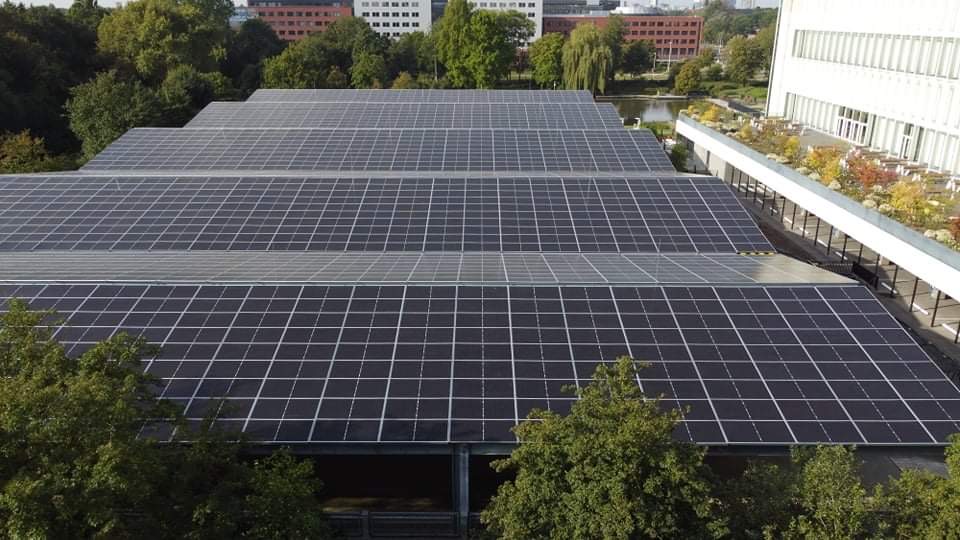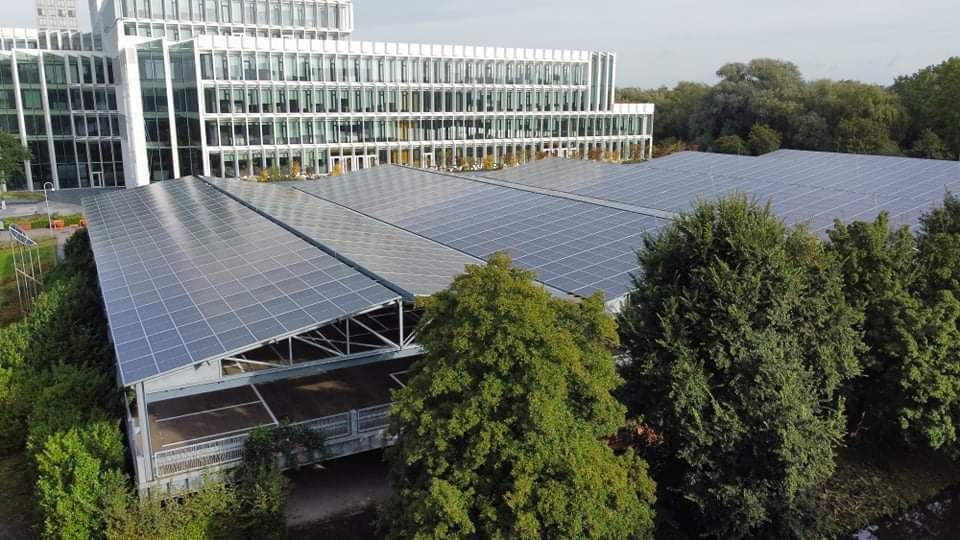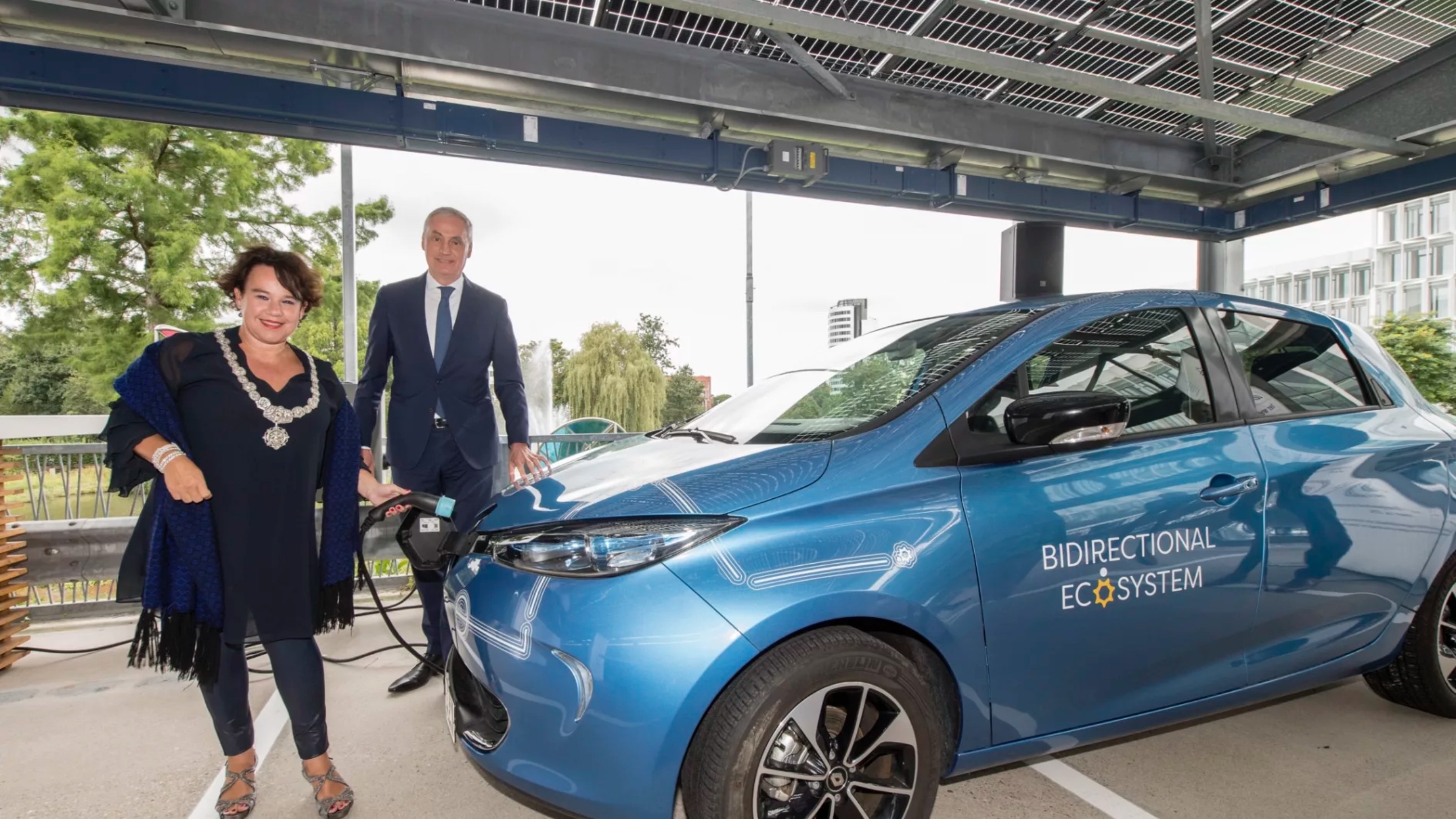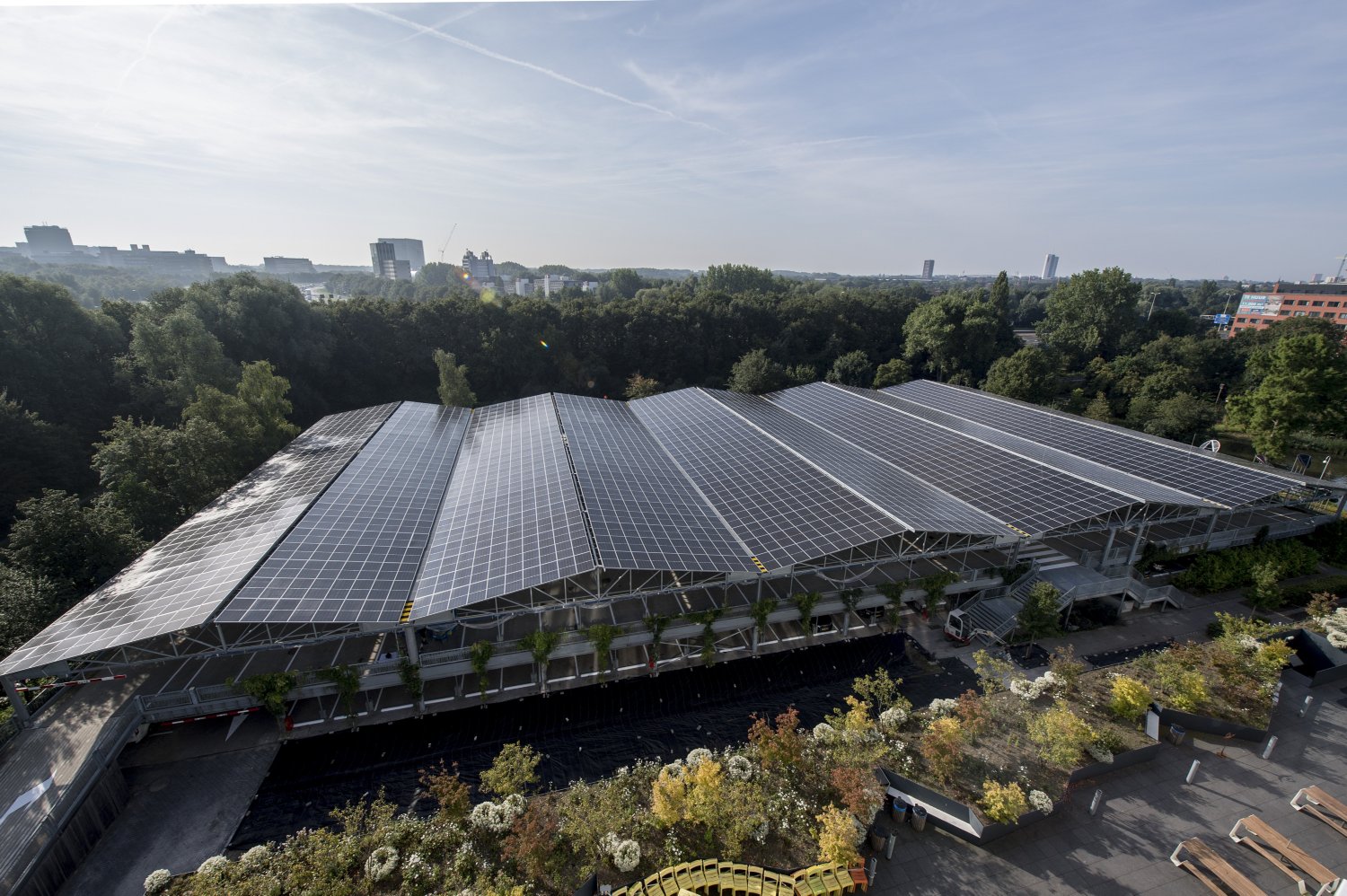
- Sustainable Planet -
- 5mins -
- 1,748 views
Netherlands builds world’s largest solar car park where electric cars can both charge & supply power
This sustainable car park at a Dutch insurance company’s head office in Utrecht can simultaneously charge and discharge 250 electric cars owned by employees, and has integrated batteries where the generated power can be stored.
A parking garage where electric cars charge and supply electricity.
The new generation of cars with batteries will soon not only charge, but will also supply power to the grid when it is needed. In any case, according to the municipality of Utrecht, this ‘bidirectional charging’ is the future. Insurer a.s.r., whose head office is in the city, opened the largest two-way charging infrastructure in the world in their parking garage on Wednesday 15 September 2021.

bi-directional solar charging station can top up vehicles and top up the grid
Recently, a gigantic semi-open sunroof was installed on top of the garage, which, together with the panels in the adjacent office, already provides a significant part of the building’s power needs.
But it can always be better. And so a.s.r. installed something that is currently (no pun intended) very special, but which could well become the standard in the future: charging stations that can go in two directions. They can charge cars (for example with the solar power from the roof), but they can also draw power from the car and feed it to the building.
The latter can be very useful if the cars do not have to leave quickly and the a.s.r. building is closed. requires more energy than the panels generate. Think about times when the sun doesn’t shine. Or if there is a sudden peak load, because the building has to be heated more (with electric heat pumps) than usual.
Source: Change.inc

Peak moments in power demand
According to Sharon Dijksma, mayor of Utrecht, this is the future for the Dutch energy supply. Especially for the peak load around six o’clock in the evening.
“Some customs, such as the beepers that go on the fire, are difficult to break. So more power is needed than sustainable sources can supply at once," said the mayor during the opening of the garage. Moreover, in winter it is already dark around dinner time, so the solar energy is lost. To solve it, some form of temporary energy storage is needed. This is possible with home batteries, but with the bi-directional car you kill two birds with one stone: you have sustainable mobility and a battery in one device. So handy.
With that in mind, the company We Drive Solar also started experimenting with bidirectional charging stations a few years ago. Those trials took place in Utrecht and were so successful that there are already hundreds of two-way charging points in the city. With the addition of 250 from the a.s.r. garage, the counter comes to 1,000 charging stations. Robin Berg, director of We Drive Solar, is very happy with this development. “This shows what the Netherlands can do well: preparing for the future.”
Berg is convinced that bidirectional charging is in the future. “This is just the beginning. We are now making sure that the infrastructure is in place for the cars of the future.” They are slowly entering the car market. While We Drive Solar still had to develop the first bi-directional car, a Renault, ourselves, commercial models are now also being released. “In January we will get 25 Hyuandai cars that can charge in both directions,” Berg says. His company also announced that it would buy 100 cars from the German Sono Motors.
Source: Change.inc

More and more bi-directional cars
For a.s.r. the cars are an important step towards (even) more sustainability. “Since the financial crisis,” CEO Jos Baeten said during the opening of the garage, “we as a company decided to go all out for sustainability. We do this with our insurance products, but also with our own business operations. This is the next step in that.”
This step comes after an extensive renovation of the office, which went from poorly insulated colossus with label G to an elegant white tower with lots of glass, with energy label A++. The office is now also off the gas. And soon the dozens of cars will supply their power to the building, if possible. They deliver up to one million kilowatt hours per year; not enough for a.s.r.’s entire power requirement, but it is enough to cover a significant part. And the rest of the power is also green, the company assures.
Source: Change.inc

Direct current instead of alternating current
Setting up the garage with the two-way chargers wasn’t necessarily easy. Extra special is the fact that they all work on direct current, instead of the usual alternating current. This results in greater efficiency and lower costs – but it was a challenge, because direct current can fluctuate.
Jos Ruijter, the man who, on behalf of a.s.r. arranged everything technically, saw how difficult it was sometimes. “DC requires devices that streamline everything. They make it in Sweden, but it took a lot of effort to convince the maker that it also worked for our parking garage. Still, it worked,” he says proudly at the opening, pointing to the cables hanging from the top of the garage.
It shows how much the insurance business is pioneering. According to Ruijter, this is an example for fleets of other companies. “Definitely, this is going to get bigger. And we show that it is possible.” If more companies do this, the lease cars that each company has could well make an important contribution to the transition to sustainable energy. Then those cars are in fact large batteries that collectively provide power when the wind and sun fail. Utrecht is in any case ready, Mayor Dijksma also proudly says: “This is a new sustainable icon for our city.”
This article first appeared in Change.inc, in Dutch.

